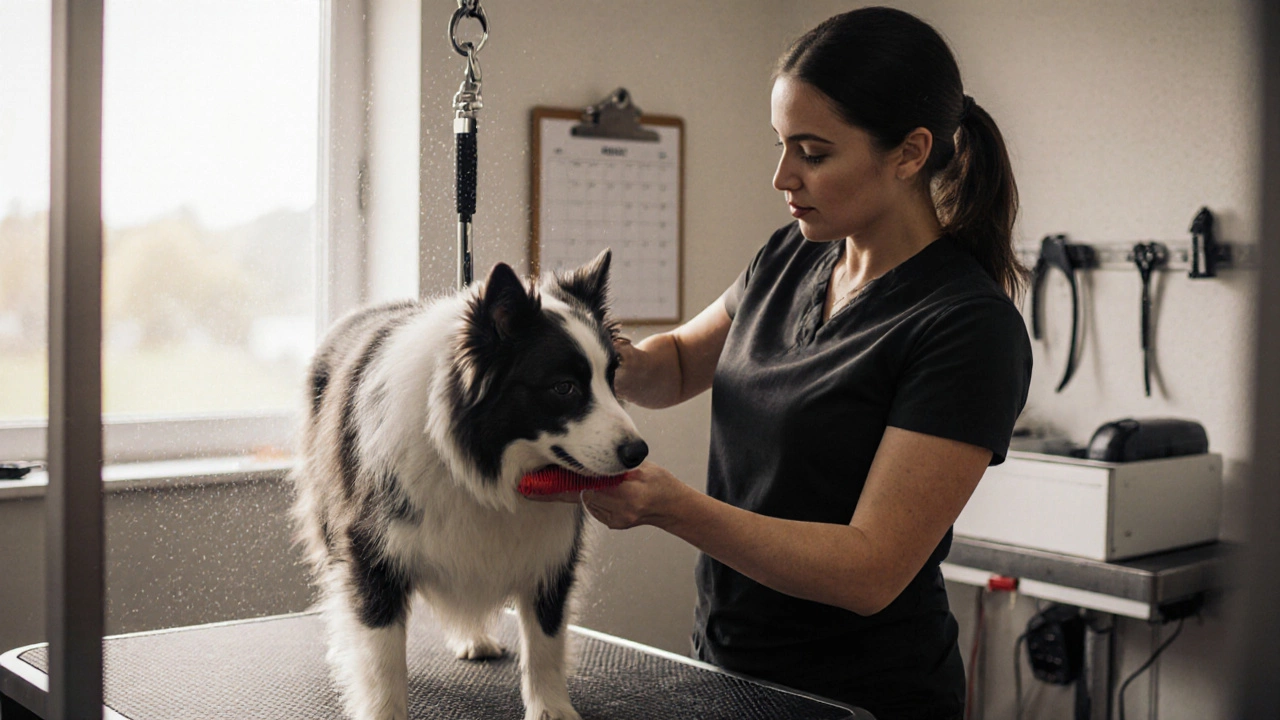Dog Grooming Schedule: How Often to Bathe, Brush, Trim & Care
Wondering how often you should groom your dog? The answer isn’t one‑size‑fits‑all, but you can set a simple routine that keeps fur, skin, and nails healthy without breaking the bank. Below you’ll find a clear plan that works for most breeds, plus easy at‑home tips you can start today.
Why a Regular Grooming Routine Matters
Routine grooming does more than keep your dog looking good. It prevents matting, reduces shedding, catches skin problems early, and lets you check for ticks, lumps, or injuries. A predictable schedule also makes grooming less stressful for your pup because they know what to expect.
Think of grooming like a dentist check‑up. Skipping it can lead to bigger issues that cost more time and money later. The good news? You don’t need a professional every week—most tasks can be handled at home with a few basic tools.
Weekly, Monthly & Seasonal Grooming Tasks
Weekly Basics (All Dogs)
- Brush the coat: Short‑haired dogs need a quick sweep 2‑3 times a week. Long‑haired breeds should be brushed daily to stop tangles.
- Check ears: Look for redness or wax buildup and wipe gently with a vet‑approved cleaner.
- Inspect paws: Trim any overgrown hair between pads and wipe away debris after walks.
Monthly Essentials
- Bath: Most dogs are fine with a bath every 4‑6 weeks. Use a dog‑specific shampoo; human products can irritate their skin.
- Trim nails: If you can hear the click on the floor, it’s time to trim. Dogs that love soft surfaces may need a trim more often.
- Dental care: Brush teeth or use dental chews at least once a month to reduce plaque.
Seasonal Deep‑Care
- Full coat trim or shave: In hot climates, a professional trim can keep your dog cool. In colder months, keep the coat longer for insulation.
- Flea & tick prevention: Apply seasonal treatments even if you stay mostly indoors.
- Skin check: Summer brings more sunburn risk; winter can dry out skin. Adjust moisturizers or sun protection as needed.
These timelines are flexible. If your dog rolls in mud often, add an extra bath. If they’re a fast grower, nail trims may need to be weekly.
Now, a quick tip that saves money: learn to do the basic trims yourself. A good clipper set, a brush, and a nail grinder cost a one‑time fee and can replace several pricey salon visits per year. Start with small, easy cuts—like trimming the hair around the paw pads—and build confidence.
When you do need a professional groomer, ask them whether they wash before they cut or cut before they wash. Most pros wash first to get a clean canvas, but some cut first to avoid drying out a thick coat. Knowing the process helps you plan the timing of home grooming around the salon visit.
Finally, keep a simple checklist in your phone or on the fridge. Mark off each task as you finish it. A visual reminder makes the routine feel less like a chore and more like a habit.
Stick to this schedule, adjust as needed, and you’ll see a shinier coat, healthier skin, and a happier dog—without endless trips to the groomer.

How Many Dogs Can You Groom in a Day? Realistic Numbers for Professional Groomers
Learn how many dogs professional groomers can realistically handle in a day - and why quality matters more than speed. Get practical tips on scheduling, time management, and avoiding burnout.
read more
Dog Grooming: Essential Frequency and Techniques
Regular grooming is essential for maintaining a dog's health and appearance. The frequency of grooming sessions depends on several factors, including breed, coat type, and lifestyle. This article explores different grooming needs for various dogs, offering insights into appropriate schedules and techniques. Grooming is not just about appearance, but also about ensuring your dog's well-being.
read more



